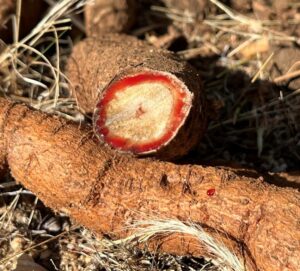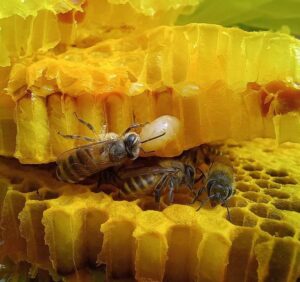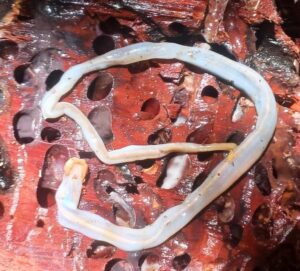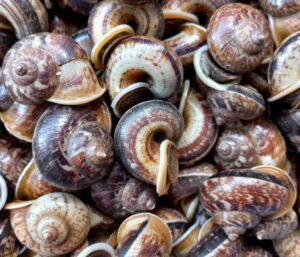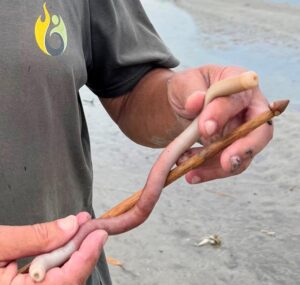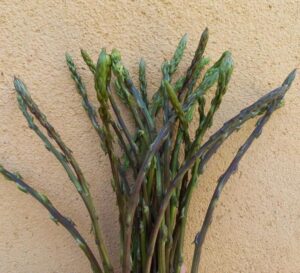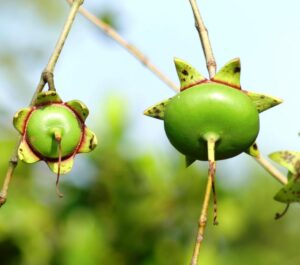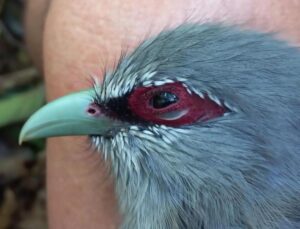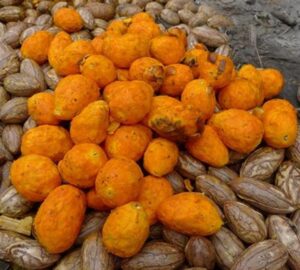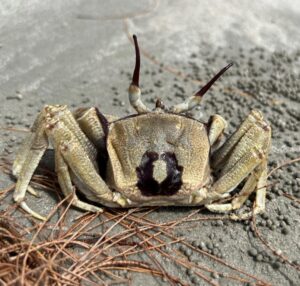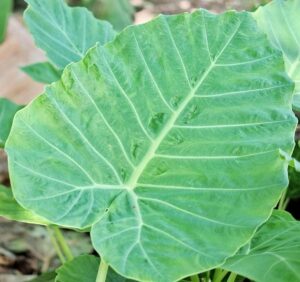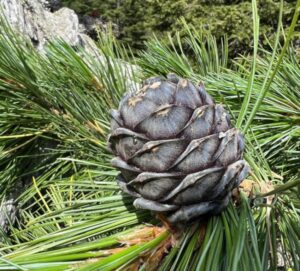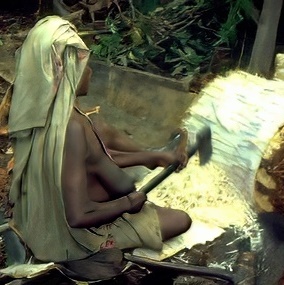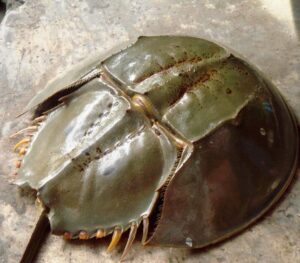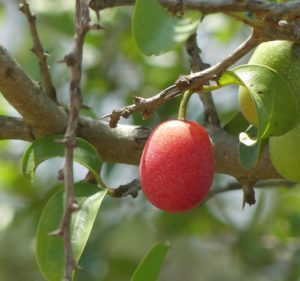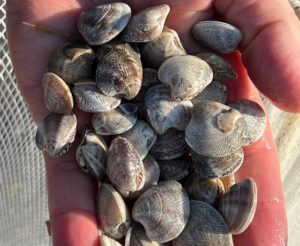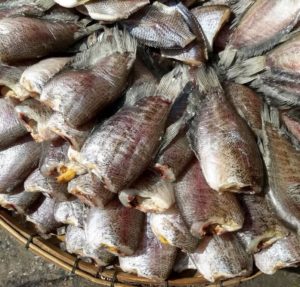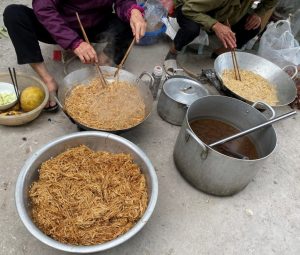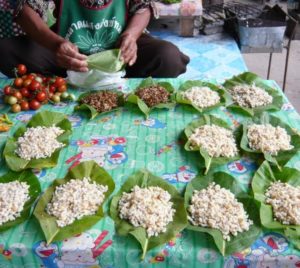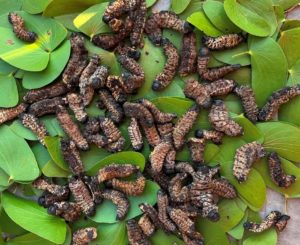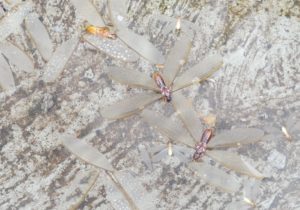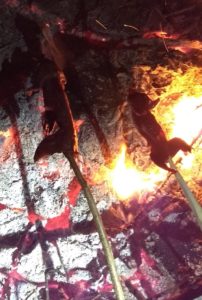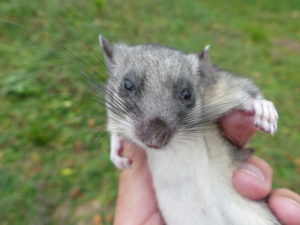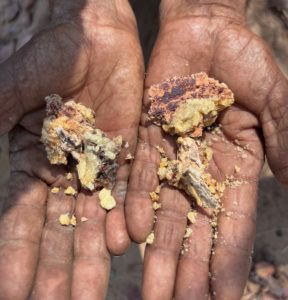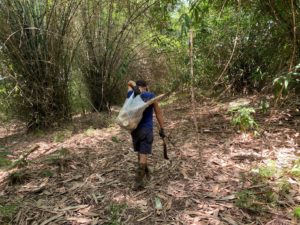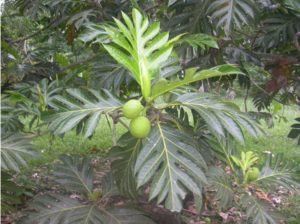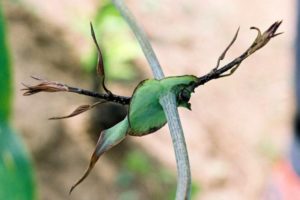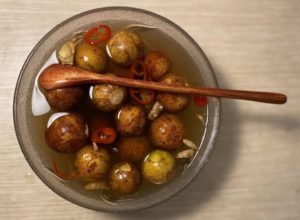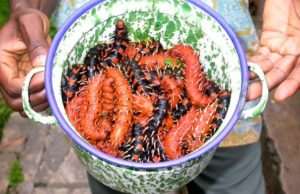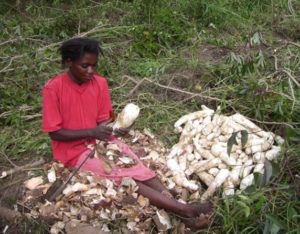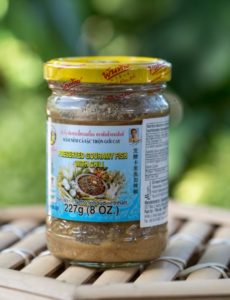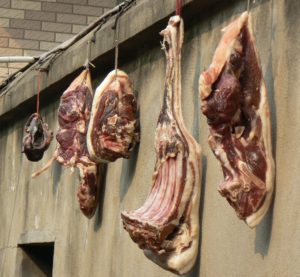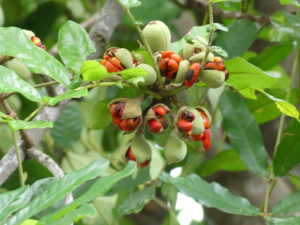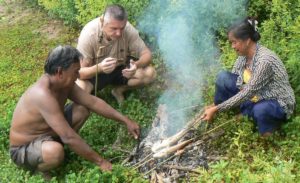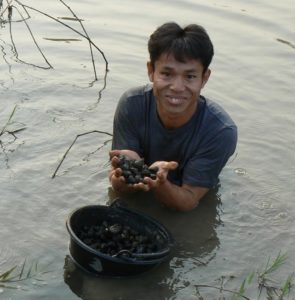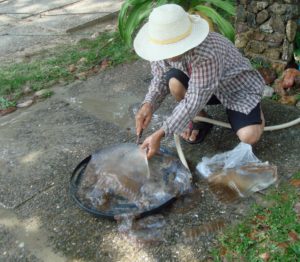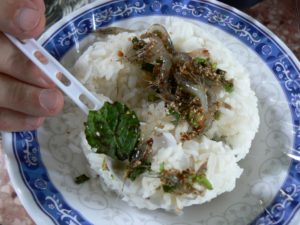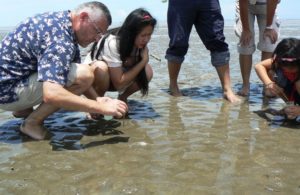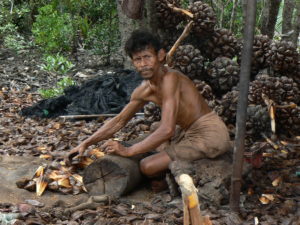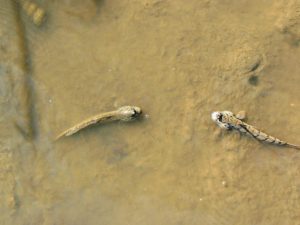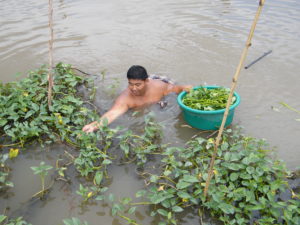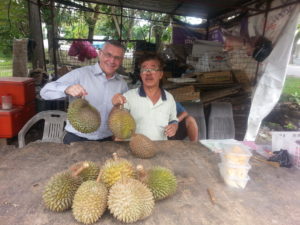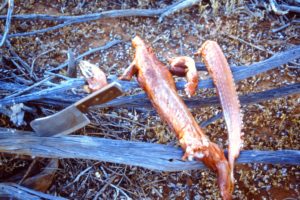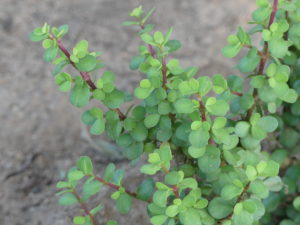Food preparation
Wild Sweetpea tubers as food for Hadza people
Wild Sweetpea (Vigna frutescens) tubers are a staple source of starchy food for the Hadza people in Tanzania. The plant’s common name in the Hadza language is //ekwa. To collect them, groups of Hadza women regularly head out into the…
Collecting honey in a rock crevice
Asian honey bees and their combs are a special treat for the local population of backcountry areas at Pu Luong Nature Reserve in northern Vietnam. The harvested honey is seldom sold and is mainly used by the villagers. The grubs,…
Harvesting Shipworms in a Thai Mangrove Forest
Edible shipworms, in this case Bactronophorus thoracites, are also known as Naked clams, Priyang talay (เพรียงทะเล), and various other common names throughout the region where they occur. They bore into wood immersed in salt water and are a major hassle…
Collecting Pipi clams at Rawai Beach
Pipi clams (Donax deltoides) are also known as Surf clams, Sandy Donax, and a wide range of other common names. In Thailand, they can be found on most beaches in the Gulf of Thailand and the Andaman Sea. They are…
Edible rock snails in limestone areas of Vietnam
Rock snails of the genus Cyclophorus are highly sought-after wild foods in rocky limestone mountain areas of Vietnam. These snails are not only regarded as food but also as medicine against various ailments. The local Vietnamese name is Ốc thuốc,…
Collecting Bibi worms on Koh Lanta
Bibi worms (Sipunculus nudus Linnaeus, 1776) belong to the Peanut worm phylum. They can be dug up at the intertidal zone of flat, sandy beaches on temperate and tropical beaches. These worms are primarily used as top fishing bait. At…
Wild asparagus in Sicily
Wild asparagus, a unique culinary delight, is prominent in Sicily’s springtime cuisine. The region boasts two distinct species: Asparagus albus, White asparagus, and Asparagus acutifolius, affectionately dubbed ‘Wild asparagus’ in English. Another edible part of these plants is its ‘crown’…
Mangrove apples at the Mekong Delta
Mangrove apples are the fruits of Sonneratia sp. trees, one of the important genera of trees in the Mangrove forests of Southeast Asia. All species of Sonneratia will develop edible Mangrove apples. The various Sonneratia species differ slightly in shape,…
Green-billed Malkoha bird on the spit
The Green-billed Malkoha is a common bird in Vietnam’s semi-deciduous tropical forests. An expedition led to the capture of one who was cooked for lunch. This and other species are often hunted by villagers supplementing their diet with this and…
Raphia sese – a very special Raphia palm
Raphia sese (Arecaceae) Common names: Nsaku (Kongo = knife with a long blade), ba di magangu (Kongo). Description A palm which grows in dense clumps up to 10 m tall. Female flowers are produced at the base and male flowers…
Catching Ghost crabs by digging
Ghost crabs (genus Ocypode) comprise 22 different species, and they are commonly also called `Sand crabs.` The scientific name Ocypode has Greek origin and means swift-footed. Ghost crabs are semi-terrestrial crabs that dig deep burrows in intertidal zones of sand. They…
Giant Taro – a plant with a giant root
English: Giant taro; Scientific name: Alocasia macrorrhiza (L.) Schott; Synonyms: Alocasia indica (Lour.) Spach; Plant family: Araceae Description of Giant Taro plants A very large herb of the taro family. It has a stout erect trunk up to 4 m…
Swiss pine cones and their uses
The Swiss pine (Pinus cembra) goes by different names in German-speaking countries, such as ‘Zirbe,’ ‘Arve,’ ‘Arolla pine,’ or ‘Austrian stone pine.’ For generations, people have used the nuts of this particular pine species as food during the winter months,…
Sago – staple food in parts of Papua New Guinea
There are two Sago palm species in Papua New Guinea. Metroxylon sagu Rottb. and the other one occurs in North Solomons Province and the Solomon Islands. Its scientific name is Metroxylon salomonense. The sago palm plant The sago palm grows…
Utilizing Horseshoe Crabs as a Food Source
Foreword Horseshoe crabs are a species not protected in Thailand and are experiencing a significant decline. Their primary habitats, particularly the mudflats around mangrove forests, where they live and reproduce, are diminishing, and there is a growing demand for edible…
Sourplum fruits for food and oil
Sourplums, which belong to the Olacacea family, comprise two species: the Blue Sourplum (Ximenia americana) and the Great Sourplum (Ximenia caffra). Blue Sourplum The Blue Sourplum is naturally distributed in semi-tropical and tropical countries worldwide, as shown on the map….
Beachcombing for Vongole clams in Northern Italy
Vongole clams (Ruditapes philippinarum) are the main bivalve species collected from the flat beaches of the Adriatic Sea in Northern Italy. Introduced to aquaculture facilities in the lagoon of Venice in 1983, they are now considered an invasive species, having…
Semi-Dried Fish in Thailand
In Thailand, both sea and freshwater fish are dried to increase their shelf life for later human consumption. Before the advent of refrigeration, the primary method for preventing spoilage was to salt the fish and then leave it in the…
Canh Măng Mực: The Royal Dried Squid and Bamboo Soup of Bát Tràng
Experience the sophisticated flavors of Northern Vietnam with Canh Măng Mực, a rare, traditional Vietnamese squid-and-bamboo soup. Deeply rooted in the culinary heritage of the ancient Bát Tràng ceramic village near Hanoi, this dish is far more than a simple…
Weaver ants got interesting traits
Weaver ants of the genus Oecophylla consist of two different species. One species is Oecophylla longinoda, which occurs in equatorial, tropical African regions. The other species is Oecophylla smaragdina, distributed in tropical Asia and Australia. Both of them are also…
Mopane worms – high protein food in Africa
Mopane worms (Instars of Gonimbrasia belina) are mainly found on Mopane trees (Colophosperma mopane) but also on Wild Syringa (Burkea africana), Zebrawood (Microberlinia Brazzavillensis) and others. However, Mopane trees are a highly dominant species in climates and areas suitable for…
Field dressing and cooking a puff adder
Puff adders (Bitis arietans) are widely distributed throughout Sub-Saharan Africa, except in dense rainforest areas and Madagascar. They have a tell-tale flat head with a straight line between the eyes, a thick body with chevron markings, and a stumpy tail,…
African termite alates for food
In Southern Africa, Harvester termite alates (Hodotermes spp.) and Mound-building termite alates (Macrotermes spp.) swarm within a specific area usually once a year. These alates are winged termites, which termite workers keep within certain chambers in the mound. They represent…
Skinning and processing of dormice in Slovenia
Before dormice can be skinned, processed, and cooked – they have to be caught. That is an art of its own and is described in an article under this Link here. Skinning and processing of dormice is done similarly to…
Dormouse trapping in southern Slovenia
Worldwide, the dormouse family consists of three sub-families and 29 species and in Slovenia the ‘European edible dormouse’ (Glis glis) is native. There live three other dormouse species: garden dormouse (Eliomys quercinus), forest dormouse (Dryomys nitedula), and hazel dormouse (Muscardinus…
Wild Syringa (Burkea africana) edible tree resin
Many African trees extrude edible gums and resin. Notable Vachellia ssp. and Senegalia ssp. (old name: Acacias) are known for their edible gums. Khoi-sani people collect and eat whatever edible gums and resins they find on the go. In our…
Bamboo shoot harvesting at the Red River
With more than 70 bamboo species throughout the country, we can easily find bamboo thickets anywhere in Vietnam. Many could nurture one of the most popular and favored vegetarian foods for Vietnamese people, bamboo shoot harvesting. Two main types of…
Growing Artocarpus altilis (Breadfruit) in Central Africa
Synonyms A. communis, A. incises; Common names Kikwa ki santu Petelo (Kongo), arbre à pain (Fr.), breadfruit Description A tree up to 35m tall produces a wide crown. All parts of the tree produce a white, bitter latex. Fruits are…
Bush Yams in Western- and Central Africa
Synonym: D. cayenensis var. praehensilis; Common names: Kisadi, sadi, Bisadi (Kongo), Igname de brousse (Fr.), bush yams, forest yam Description A sturdy climbing plant, up to 15 m long, growing from a large tuber that often protrudes from the ground….
Indochina Dragon Plums from Hanoi streets
The Indochina Dragon Plum (Dracontomelon duperreanum) is a genus of flowering plants in the family Anacardiaceae. In Vietnamese, it is called chi sấu). Dragon Plums are one of the most popular trees on the side of Hanoi streets. The fruits…
Collection of edible caterpillars in D.R. Congo
Children are the main caterpillar collectors, though most people while walking in the bush, keep a constant watch for them. Frequently people will bring back young caterpillars and place them on trees near their homes where they can keep an…
Traditional processing of cassava in Congo
Image sequence of cassava’s long way from root to market and shows the processing of cassava in its various steps Source This article is an excerpt of Paul Latham’s and Augustin Konda ku Mbuta’s books ‘Useful plants of Kongo Central…
Pla Ra – Thailand’s fermented fish condiment
Pla Ra (Thai: ปลาร้า, pronounced [plāː ráː]), is fermented fish. Traditionally, Thais in the Central and Northeast provinces (Isan) eat fish and rice. In these relatively poor provinces, there is only one rice growing cycle every year. The planting season…
Drying meat in Shanghai at wintertime
It is at least a 2000-year-old tradition in many provinces in China to cure and preserve meat in wintertime. Pigs were slaughtered after the ‘Light Snowfall’ date (around Nov 22nd/23rd). Then, the temperatures plummeted, and this meat had to be…
Trunk it – it’s Marula beer!
Marula season in Southern Africa typically occurs in February of each year. When Marulas (Sclerocarya birrea) get ripe, they turn from green to yellow and fall from the female Marula trees. On the ground, they ripen fully and will start…
Natal Mahogany seed milk and its preparation
Natal Mahogany (Trichilia emetica) trees have got a dense canopy of dark green, glossy leaves, and a round outer shape of the tree silhouette. They preferably grow in moist places and riparian forests along drainage lines. Natal Mahogany is easy…
Pla Yang: Traditional Thai Open-Fire Spit Roasted Fish Guide
Grill spit for small fish outdoor cooking on a spit Smaller fish up to about 20 cm long are typically put on a grill spit, which is just a split stick. Often, in Thailand, this will be Pla Kod (Thai:…
Freshwater snails for food
In Thailand, two types of freshwater snails are commonly consumed. The first group is comprised of the larger Apple snails (Pomacea canaliculata), while the other group is referred to as Freshwater snails (Sinotaia sp. & Filopaludina sp.). These genera can…
Jellyfish for food and its preparation
Edible jellyfish (Aurelia sp.) is called ‘Maeng krapun jarn’ (Gulf of Siam) or ‘Lodchong’ (Andaman Sea) in Thailand. Usually, there are about three months a year when jellyfish appear for food. During this jellyfish run, sea fishermen earn a sizeable…
The Ultimate Survival Snack: Foraging and Preparing Ricefield Shrimp
Freshwater prawns, specifically Macrobrachium lanchesteri—locally known as Goong foi in Thailand—are one of the most efficient “survival foods” you can find in the wild. While they might be small, these translucent crustaceans are abundant in nearly every permanent water body…
Razor clams collection with quicklime
A mudflat full of razor clams ‘Don Hoi Lot’ is a mudflat in the Thai Province of Samut Songkhram with a size of about 15 km2 (about 9 square miles). ‘Don’ means ‘mudflat’ in English. ‘Hoi’ means ‘clam’, and ‘Hoi…
Harvesting and opening Nipa Palm fruits
Nipa palms (Nypa fruticans) are a species of palms especially adapted to muddy environments of slow-moving tidal waters and mangrove forests. They occur in Asia-Pacific tropical climates. Nipa palm fruits are delicious to eat. Both the fruits and wooden parts…
Mudskippers for food
In Thailand, four mudskipper species can be found. These are the Giant mudskipper (Periophthalmodon schlosseri), Blue-spotted mudskipper (Boleophthalmus boddarti), Gold-spotted mudskipper (Periophthalmus chrysospilos) and the Indian Dwarf mudskipper (Periophthalmus novemradiatus). The Giant- and Blue-spotted mudskippers live at the Andaman Sea-…
Morning glory – a valuable wild vegetable in Asia
Swamp morning glory or Water spinach (Ipomoea aquatica) has various common names, like ‘Kangkong’ in Southeast Asia or ‘Kung Shin Tsai’ in China. It is a staple vegetable food throughout the Asia-Pacific region. It is deficient in calories (19 cal/100…
Heavenly Durian
The fruit Durian (Durio zibethinus) is named after the Malay word ‘Duri’ for ‘Thorn’, referring to the thorny skin, and ‘zibethinus’ obviously refers to its smell. And the most sought-after variety in Malaysia is ‘Musang King’, where ‘Musang’ means ‘Palm…
Eating a sand monitor lizard (Goanna)
In the former article, I described seeing a majestic sand monitor lizard close by on my drive from Menzies to Sandstone on a side road. Driving further on, I was surprised to see many more Goannas left and right on…
Spekboom leaves as vegetable in South Africa
Among the many edible South African plants, few are as remarkable as Spekboom (Portulacaria afra), a member of the Didiereaceae family. Known locally as the elephant bush, this hardy succulent is celebrated for its ecological benefits and, increasingly, for its…

